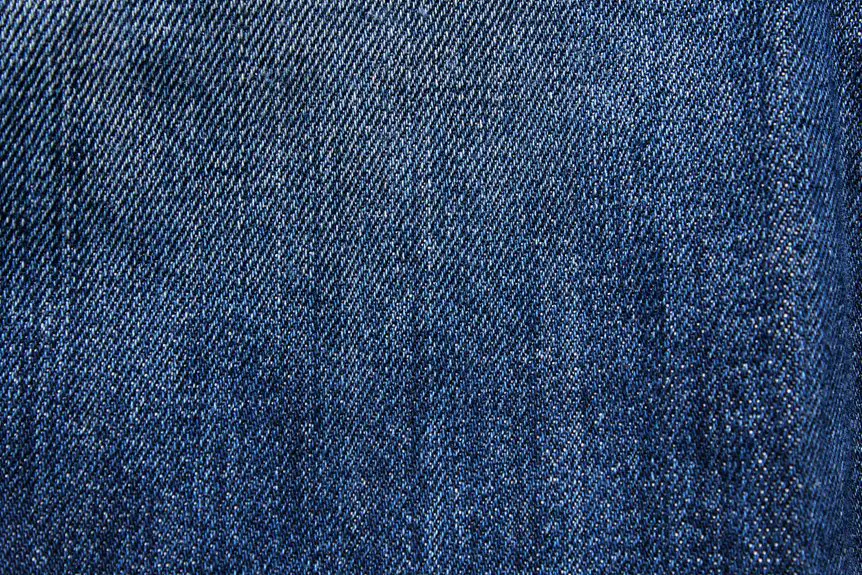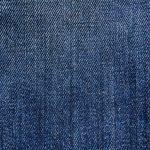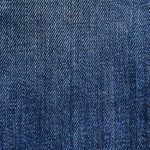Gingham fabric is primarily made from natural fibers like cotton and linen, giving you breathable, soft, and comfortable material. Modern gingham often blends these with synthetic fibers like polyester to enhance durability, wrinkle resistance, and ease of care. Cotton gingham feels soft but may shrink, while blends offer more practicality. Linen provides a crisp, textured look. If you want to understand how these fiber choices affect texture, durability, care, and environmental impact, there’s plenty more to explore.
Table of Contents
Key Takeaways
- Gingham fabric is traditionally made from natural fibers like cotton and linen, known for softness and breathability.
- Modern gingham often includes cotton-polyester blends to enhance durability, wrinkle resistance, and ease of care.
- Cotton gingham is soft and comfortable but prone to shrinkage, while polyester blends improve strength and stain resistance.
- Linen gingham offers a textured, crisp feel with rustic charm, suitable for casual and semi-formal wear.
- Some historical gingham pieces may incorporate wool or silk, though these fibers are less common today.
History and Origin of Gingham Fabric
Although you might associate gingham fabric with classic picnic blankets or summer dresses, its history dates back several centuries.
Gingham fabric, often linked to summer dresses and picnic blankets, has a rich history spanning several centuries.
You’ll find that gingham originally came from Southeast Asia before it made its way to Europe in the 17th century. When it first arrived, it was a plain, striped fabric, not the checkered pattern you recognize today.
Over time, manufacturers in England began producing the checked gingham that we’re familiar with now, making it popular for clothing and home textiles.
You’ll notice that gingham’s simple, bold patterns made it easy to weave, which helped spread its use worldwide.
Understanding this background helps you appreciate gingham not just as a pattern but as a fabric with rich cultural and historical roots.
Traditional Fibers Used in Gingham
Since gingham has been around for centuries, it traditionally uses natural fibers like cotton and linen, which offer breathability and comfort.
When you choose gingham made from these fibers, you get fabric that’s lightweight and perfect for warm weather. Linen fibers add a slightly textured feel and a crisp look, making the fabric durable and ideal for casual or semi-formal clothing.
Cotton, on the other hand, provides softness and easy care. You might also find gingham woven from blends that include wool or silk in historical pieces, but these are less common.
Using natural fibers guarantees the fabric stays breathable and comfortable against your skin, so you’ll enjoy wearing gingham in various styles without feeling restricted or overheated.
Cotton: The Most Common Material
When you choose gingham made from cotton, you’re getting a natural fiber that offers great breathability and comfort.
You’ll appreciate how durable it is, standing up well to regular wear and easy care.
Cotton’s qualities make it a top choice for everyday gingham fabrics.
Natural Fiber Benefits
While you mightn’t always notice, cotton plays an essential role in making gingham fabric comfortable and durable. By choosing natural fibers like cotton, you benefit from its renewable and biodegradable qualities, which make it an eco-friendlier option compared to synthetic materials.
Cotton’s natural softness guarantees the fabric feels gentle against your skin, reducing irritation. Additionally, cotton’s strength helps gingham resist wear and tear, so you get lasting use.
When you opt for gingham made from natural fibers, you’re supporting sustainable farming practices that have less impact on the environment. Plus, natural fibers like cotton tend to maintain their color and texture well after washing, keeping your gingham looking fresh and vibrant over time.
Breathability and Comfort
Although gingham can be made from various fibers, cotton remains the most popular choice because it offers exceptional breathability and comfort.
When you wear cotton gingham, air easily circulates through the fabric, helping to keep you cool and dry even on warm days. The natural fibers wick moisture away from your skin, reducing sweat buildup and preventing that sticky, uncomfortable feeling.
You’ll also notice cotton’s softness, which feels gentle against your skin, making it ideal for everything from shirts to dresses. Plus, cotton gingham adapts well to changing temperatures, providing comfort whether you’re inside or outdoors.
Choosing cotton means you get a breathable, lightweight fabric that feels great all day long without sacrificing style or ease of movement.
Durability and Care
Cotton gingham doesn’t just feel good—it stands up well to everyday wear and washing. When you choose cotton gingham, you get a fabric that’s durable enough for frequent use, yet gentle on your skin.
To keep it looking fresh, wash it in cold water and avoid harsh detergents. You can machine wash and tumble dry on low, but air drying helps preserve the fabric’s color and texture longer. If wrinkles bother you, iron on a medium setting while the fabric is slightly damp.
Avoid bleach, as it can weaken the fibers and fade the vibrant gingham pattern. With proper care, your cotton gingham pieces will maintain their charm and durability, making them a reliable choice for both casual and dressier occasions.
Blended Fabrics in Modern Gingham
You’ll often find gingham made from blended fabrics like cotton-polyester or cotton-linen to combine the best qualities of each fiber.
These blends improve durability, wrinkle resistance, and comfort, making the fabric more versatile for everyday wear.
Let’s explore some popular blended gingham types and what makes them stand out.
Common Fiber Combinations
When you explore modern gingham, you’ll find that blended fabrics have become increasingly popular for combining the best qualities of different fibers. These blends enhance gingham’s durability, texture, and comfort. You’ll often see cotton mixed with synthetic fibers or natural fibers combined to balance softness and strength. Here’s a quick look at common fiber combinations used in gingham fabric:
| Fiber Combination | Characteristics | Typical Use |
|---|---|---|
| Cotton-Polyester | Durable, wrinkle-resistant | Everyday wear |
| Cotton-Linen | Breathable, textured | Summer clothing |
| Cotton-Spandex | Stretchy, comfortable | Activewear |
| Polyester-Rayonne | Smooth, colorfast | Dresses, shirts |
| Cotton-Silk | Soft, luxurious | High-end fashion |
Each blend brings unique properties, making gingham versatile and practical.
Benefits of Blends
Although blending fibers might seem like a small detail, it greatly boosts gingham’s performance and appeal.
When you choose blended gingham, you get the best of both worlds—natural comfort combined with enhanced durability. Blends often improve wrinkle resistance, so your gingham stays crisp longer without constant ironing.
They also enhance breathability, keeping you cool while adding strength to the fabric, making it less prone to tearing or pilling. Plus, blended fabrics typically maintain color vibrancy better, meaning your gingham patterns stay sharp wash after wash.
You’ll find blended gingham easier to care for and more versatile for various uses, from casual wear to home décor. Opting for blends means you don’t have to compromise between comfort and longevity.
Popular Blended Gingham Types
Since blended fabrics combine the best qualities of different fibers, they’ve become a popular choice in modern gingham production.
You’ll find several blends that offer durability, comfort, and easy care, making gingham even more versatile.
Here are some popular blended gingham types to evaluate:
- Cotton-Polyester: Combines cotton’s breathability with polyester’s wrinkle resistance and strength.
- Cotton-Linen: Adds a lightweight, natural feel with enhanced texture and breathability.
- Cotton-Spandex: Offers stretch and flexibility, perfect for fitted clothing.
- Rayon-Cotton: Provides a soft feel with a slight sheen and improved drape.
Choosing a blended gingham fabric means you get the best of both worlds, perfect for everyday wear or stylish outfits.
How Fiber Content Affects Gingham’s Texture
Understanding how fiber content shapes gingham’s texture helps you choose the right fabric for your project.
Cotton gingham feels soft and breathable, making it ideal if you want a lightweight, comfortable fabric that drapes naturally.
Polyester blends add a bit of smoothness and wrinkle resistance, giving the fabric a slightly slicker feel while maintaining some breathability.
Rayon gingham offers a silky texture with excellent drape, perfect if you want a more fluid look.
Meanwhile, linen gingham has a crisp, slightly rough texture that softens over time, providing a rustic charm.
Durability and Care for Different Gingham Materials
Choosing the right gingham fabric involves not only texture but also how well it holds up over time and how to care for it.
Selecting gingham means considering texture, durability, and proper care for lasting wear.
Cotton gingham is durable yet soft, but it can shrink, so wash it in cold water and air dry.
Polyester blends resist wrinkles and stains, making them easier to maintain with machine washing and tumble drying on low.
Linen gingham offers breathability but wrinkles easily; hand wash or use a gentle cycle and iron while damp.
When dealing with delicate fibers, always check care labels to avoid damage.
Here’s a quick care guide:
- Cotton: cold wash, air dry
- Polyester blend: machine wash, low tumble dry
- Linen: gentle wash, iron damp
- Always check care labels for specific instructions
This keeps your gingham looking fresh and lasting longer.
Environmental Impact of Gingham Fabric Production
When you consider the full lifecycle of gingham fabric, its environmental impact becomes clear.
Growing cotton, a common material in gingham, demands large amounts of water and pesticides, which can harm ecosystems and deplete resources.
Synthetic fibers like polyester, sometimes blended in gingham, rely on fossil fuels and contribute to microplastic pollution.
The dyeing process used to create gingham’s signature check patterns often involves chemicals that, if not managed properly, can pollute water sources.
Transportation and manufacturing add to the carbon footprint, especially if production isn’t local.
However, you can reduce environmental harm by choosing gingham made from organic cotton or recycled fibers, and by supporting brands that implement eco-friendly dyeing and production methods.
Being mindful helps lessen gingham fabric’s overall ecological footprint.
Choosing the Right Gingham Fabric for Your Project
Because gingham comes in various blends, weights, and patterns, selecting the right fabric depends on your project’s specific needs.
You’ll want to take into account the fabric’s texture, durability, and care requirements to make sure it fits your intended use. For instance, lighter gingham suits summer dresses, while heavier options work well for upholstery or curtains.
To choose wisely, keep these points in mind:
- Fabric Composition: Cotton for breathability, polyester blends for durability
- Weight: Lightweight for apparel, medium to heavy for home decor
- Pattern Size: Small checks for subtlety, large checks for bold statements
- Care Instructions: Machine washable or dry clean only, depending on fiber content
Frequently Asked Questions
Can Gingham Fabric Be Used for Upholstery?
Imagine a cozy picnic blanket’s charm—yes, you can use gingham for upholstery! It brings a fresh, timeless vibe to your furniture, but remember to choose heavier, durable versions for lasting comfort and style in your space.
Is Gingham Fabric Suitable for Outdoor Use?
You shouldn’t rely on gingham fabric for outdoor use since it’s usually made from cotton or blends that aren’t weather-resistant. You’ll want to choose specially treated or synthetic fabrics designed to handle sun and moisture instead.
How Does Gingham Fabric React to Dyeing After Production?
Did you know over 60% of fabrics lose color vibrancy after dyeing post-production? Gingham fabric, however, reacts well to dyeing, absorbing colors evenly but may fade faster if not treated properly, so handle it with care.
Are There Waterproof Versions of Gingham Fabric?
You can find waterproof versions of gingham fabric, usually treated with special coatings or made from synthetic fibers. These versions keep the classic look but repel water, perfect for outdoor use or rainy weather.
Can Gingham Fabric Be Machine Embroidered Easily?
Imagine stitching a name on a picnic tablecloth—gingham fabric handles machine embroidery well, especially with cotton blends. Just use a stabilizer to prevent puckering, and you’ll get clean, vibrant designs every time.
- Tetron Fabric for Marine Applications: Durability and Use Cases - June 18, 2025
- Tetron Fabric for Outdoor Furniture: Weather Resistance and Care - June 18, 2025
- Tetron Fabric for Wall Coverings: Style and Application Tips - June 18, 2025







